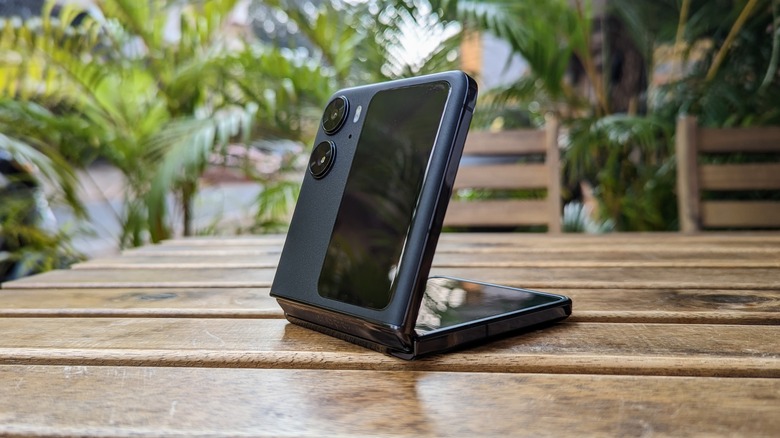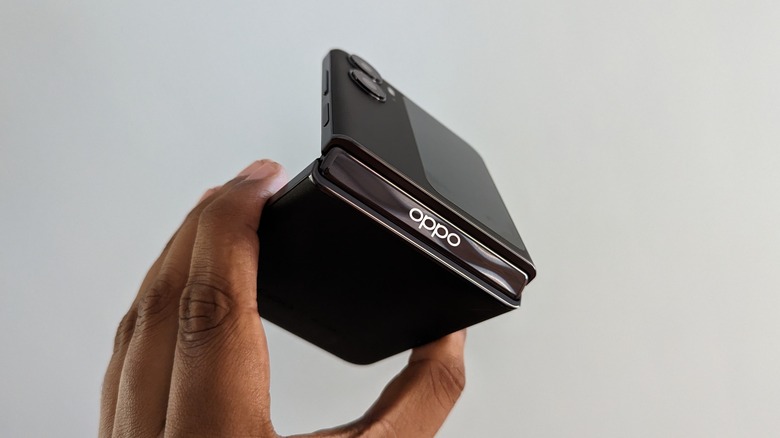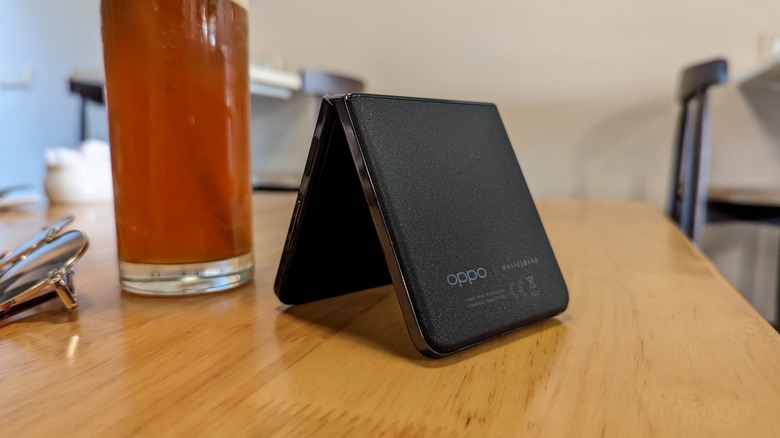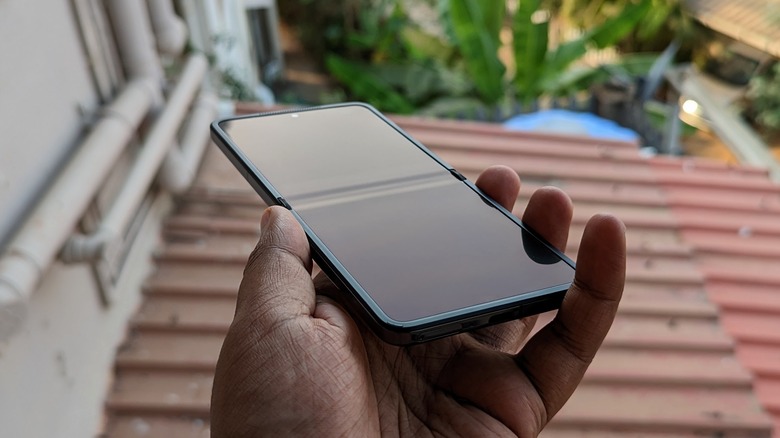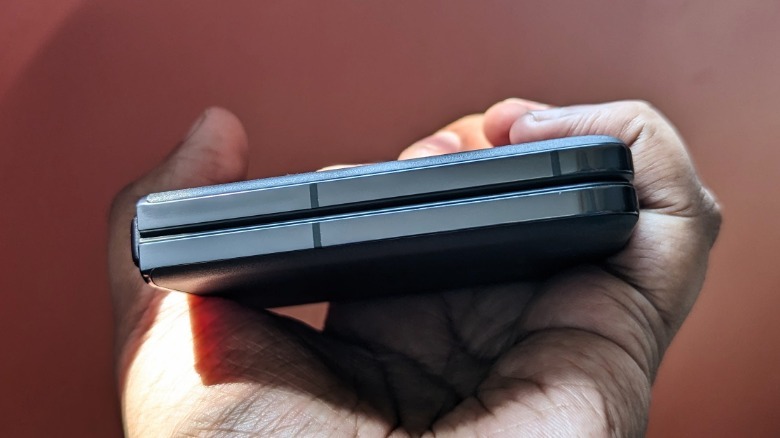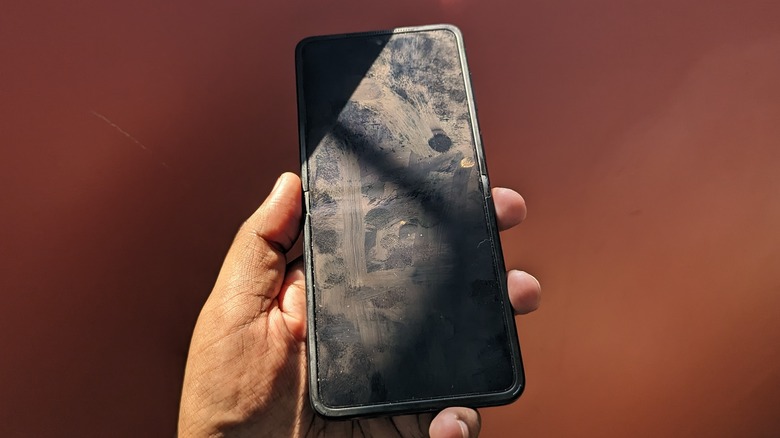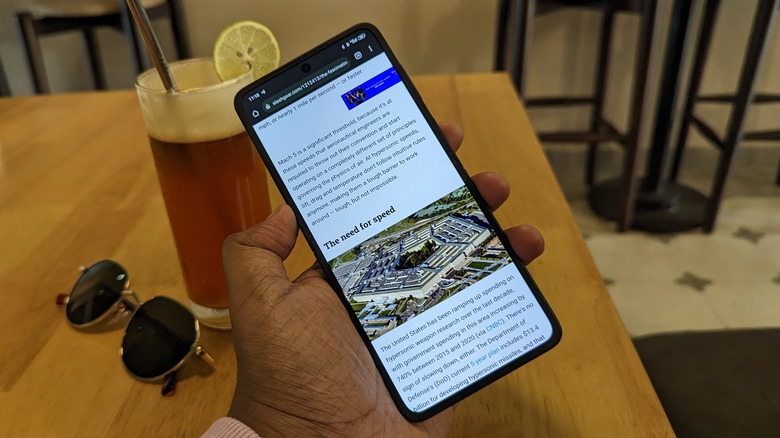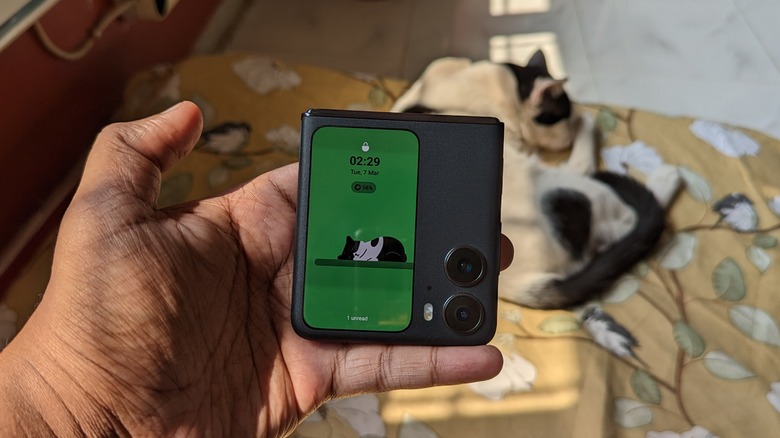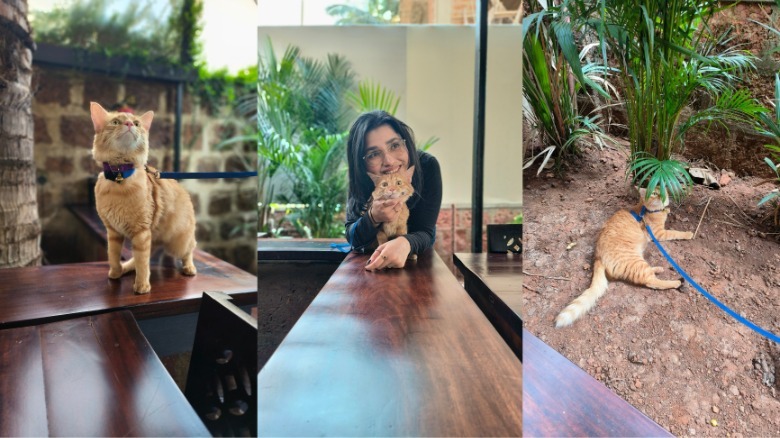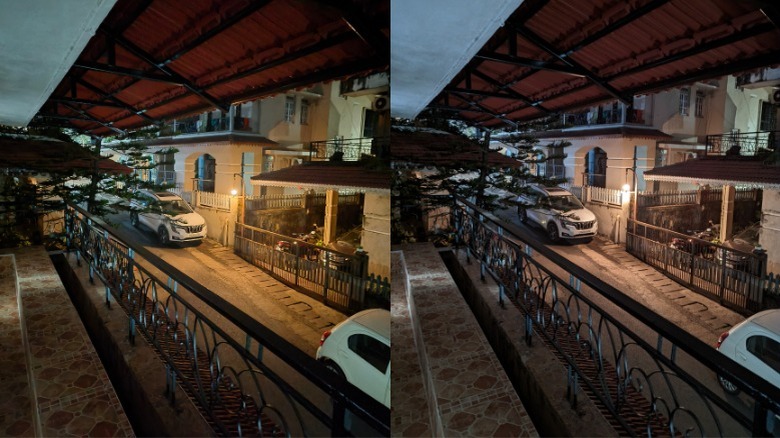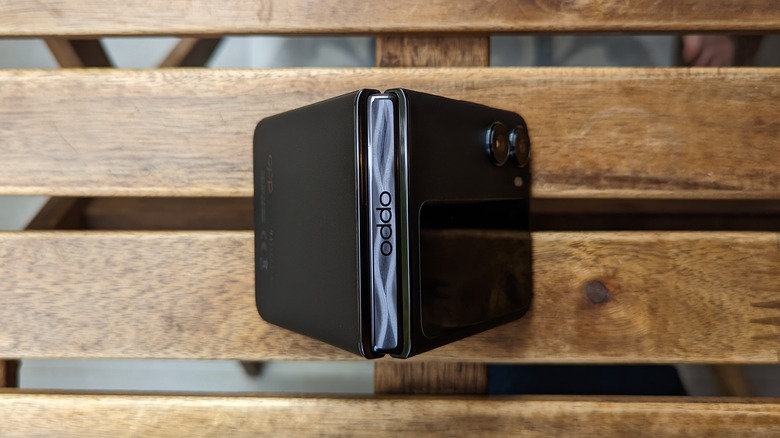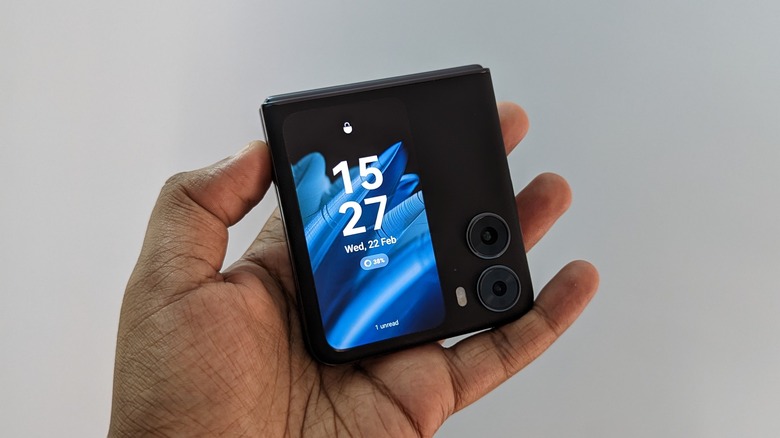Oppo Find N2 Flip Review: An Increasingly Impressive Foldable Phone
- Minimal crease
- Strong-feeling hinge
- Excellent battery life and performance
- Four-year Android update promise
- Great pricing
- Limited cover screen experience
- Cameras over-expose at times
- Software needs some work
- No IP rating
For a while, the foldable smartphone space has been dominated by Samsung, but that's starting to change now. A sign of the times? One of the biggest smartphone makers in the world, Oppo, has entered the competition. We saw the company's first full-format foldable phone drop in 2021, followed by a sequel at the end of last year. Oppo is gearing up for a broader market now with the Oppo Find N2 Flip. It's the company's first flip smartphone, and Oppo is releasing it globally.
While the Oppo Find N2 Flip isn't getting a U.S. release, specifically, it's the first foldable phone from Oppo that is going to be available outside China. While phones like the Moto Razr have faced off against Samsung's Galaxy Flip range, the Find N2 Flip seems like Oppo could finally come for Samsung's crown. It has all the correct elements to take on Samsung's flip phones, including the price. So the question is — Is the Oppo Find N2 Flip a good purchase?
Oppo sent us a unit of the Find N2 Flip for the purposes of this review. We tested the product over a period of two weeks.
Specifications and basic features
The Oppo Find N2 Flip has two screens. The main display is a 6.8-inch AMOLED display with an FHD+ (2520 x 1080 pixels) resolution screen with a peak brightness of 1600 nits. It's an LTPO panel with a refresh rate of 120Hz. Next to the camera array on the back is the device's outer cover display — a 3.26-inch 60Hz screen with a resolution of 720 x 382 pixels and a peak brightness of 900 nits.
You get three cameras here. A 50MP primary camera and an 8MP ultra-wide camera sit next to the cover display, along with the flash. The third camera is a 32MP front shooter, which sits in a punch-hole at the top of the main display. Oppo has engineered the hinge, called the Flexion Hinge, and the folding mechanism is rated for 400,000 folding cycles. The phone has no official IP rating.
Powering the phone is the MediaTek Dimensity 9000+, which is a flagship-tier octa-core chip. The phone runs on a 4,300 mAh battery. There are three variants of this phone, 8GB RAM/256GB storage, 12GB RAM/256GB storage, and 16GB RAM/512GB storage.
Design: Aesthetics and the Flip-side
We had the astral black version of the phone on hand, which isn't as out-there as the gorgeous moonlit purple (or the mysterious gold which seems to be missing from the global launch). However, the phone still looks striking, even in the low-key black shade. It's similar to the color and finish we saw on the OnePlus 10 Pro, reminiscent of the OnePlus One's Sandstone back. The matte finish on the back glass is rather smooth and grippy, though, and not nearly as rough as it appears.
The frame has a gloss finish that compliments the glass rather well. The glass curves around as it merges into the frame, so this phone wasn't even slightly uncomfortable to wield despite having flat edges on the frame. In fact, this phone was one of the most comfortable phones I've used in a while, whether folded or unfolded. The Oppo branding resides across the spine of the hinge and is applied rather elegantly.
The Find N2 Flip takes some getting used to, though, especially if you're coming from a slab phone. Since the phone has two halves the balance may initially feel unnatural in your hand. However, it's narrower than the average slab phone, making it easier to get used to. Once unfolded, the phone looks and feels rather normal.
In fact, the phone feels so solid that despite Oppo including a shell case in the box, I preferred using the phone without any case, which is not something I ever do.
Display: The best crease on a foldable yet
Foldable phones have been in a race to feel as normal as a slab phone right since the beginning. The point has been to have as little "foldable tax" as possible. A folding phone shouldn't be worse than a normal phone only because it folds in half, and the Find N2 Flip makes a decent effort at that.
The proof is in the crease. The Oppo Find N2 Flip has the smoothest feeling crease on a foldable yet, and one that is noticeably better than the Samsung Galaxy Flip 4. You can't really see the crease unless you hold it off-axis, and you can barely feel it when you scroll. This is the biggest selling point of this phone — the fact that the screen looks and feels nearly flat (or normal, if you prefer) when unfolded.
The phone also folds completely flat. There are no gaps at the fold, which is pleasantly surprising given the nearly flat crease. The flat crease and the flat fold put together feels like a landmark achievement in foldable phone engineering, especially since Samsung doesn't seem to have achieved it yet.
The hinge is very sturdy. It doesn't have the same levels of articulation as the Z Flip 4 — but feels great. I found it to be stable at 90 degrees, where it sits just right. However, it's a bit prone to gravity and will flop down and close if the phone is not resting flat on its bottom half.
The same happens the other way around if you push the hinge beyond around 110 degrees. In practical use, however, this hinge will serve you well, and it doesn't have the delicate feel I've seen with other flip phones.
Display: Just one greasy flaw
I do have one issue with the display, though, and that's the screen protector. We know foldable phones need these since they don't quite have the same glass protection as normal slab phone screens do. But the screen protector on this phone gathered a lot of grease and grime over continued usage. This is not unique to the Find N2 Flip, though, as we made similar observations in our Galaxy Z Flip 4 review.
For similar reasons, the display also needs more care than normal displays do. I managed to cause a tiny dinge in the protective film of the display despite being careful. It will be difficult to not do this, especially if you have long fingernails. Again, this has been a common problem for foldable displays, and the Find N2 Flip doesn't get any brownie points for noticeable improvements in that area.
Owing to the foldable display, the fingerprint reader also resides on the power button at the side of the phone instead of being embedded in the display, which is a net positive given the snappy performance.
Outside of the foldable appeal and tax, the display is gorgeous, with crisp colors, great outdoor visibility (especially when it's not too greased up), and a good refresh rate.
Software: ColorOS needs some work
ColorOS is Oppo's version of Android, which has been co-opted by OnePlus phones. What this means is that essentially, the software you see on the Oppo Find N2 Flip is quite similar to the one on recent OnePlus phones. It runs ColorOS 13, based on Android 13, and it feels like a distinctly different Android experience from the one I'm used to on my Pixel 7 Pro.
ColorOS is heavily skinned, but not nearly as much as something like MIUI. On the Find N2 Flip, it was snappy, but not quite coherent. The UI, on the whole, feels a bit oversized, even when the font size and display size are set to the minimum. The default launcher app doesn't allow as much customization as I'd like.
However, most of these issues were solved once I swapped up the launcher for one of Android's best launchers, Lawnchair. The overall UI still had inconsistencies, like, for instance, the label text in the quick settings panel being too large for the icon size, but the phone is snappy enough to run much smoother when you change the launcher app.
The phone has some great foldable-specific features. A nice touch is the camera app adjusting the interface when you fold the phone at 90 degrees, which is especially useful if you've propped the phone on a flat surface trying to click photos. You can also have the viewfinder preview on the cover screen when you're using the main cameras with the phone unfolded, which is another practical foldable-centric camera feature.
There are times when the foldable feature set may feel inadequate. The cover screen is a good example of this. The display itself is gorgeous, but the functionality is a bit limited.
Cover screen and the first-gen foldable curse
The Find N2 Flip has the largest cover screen on a flip phone yet. You get a quick settings panel with a swipe down, and a notification shade with a swipe up. While you can check notifications, the reply system is a bit limited. You can either respond with an emoji or with preset text templates. While this isn't too bad, it feels like an under-utilization of the large cover screen.
There's a similar issue with bigger notifications from apps like Gmail, where you can only read the subject line on the cover screen, and not the email body. This is a stark contrast from Motorola's implementation, and I think it could have to do with the fact that the display has a pixel density of only 250ppi.
I saw the "Unfold to continue" message more often than I would have liked. If you're looking for a way to encourage yourself to use your phone less than you do now, consider the limited functionality of this cover screen. Otherwise, I consider this limited functionality to be just that — limiting.
There are quite a few things to like about the cover screen, though. Oppo has put in a set of interactive pets, a rather cute addition, but not one that adds to functionality. You can also get the weather information at a glance, set timers, or check your upcoming event. However, my favorite use case with the cover screen was with the camera. It's great to snap photos (and even videos) without opening the phone.
Camera: Hasselblad makes its mark
When it comes to flip phones, the cameras tend to take a hit. It's the foldable tax, where you end up getting a weaker experience because you're paying for the foldable bits and pieces of the phone and the lack of space. The Oppo Find N2 Flip's camera experience did make me feel like it was saving a lot of that tax.
I had the Pixel 7 Pro to compare it with, and I was surprised at how well it held up against one of the best Android camera phones in the market. The Find N2 Flip takes some pretty good photos, producing colors and details that are not the best in the price segment, but pretty close.
The 50MP main shooter bins down the photos to 12.6MP, making for sufficient detail in the photos. I found the color reproduction to be slightly off, producing more vivid colors and playing with the accuracy a bit. Despite that, the photos did come out looking rather nice and very social media-worthy. Portrait shots were rather crisp too, packing in a decent amount of detail while having solid edge detection.
The one complaint I have with the main lens is Hasselblad's color science with capturing faces. I found it to let in a lot of light in daylight scenes, with faces often appearing overly bright in photos. It often needed the exposure slider to be lowered to get a more accurate and better-looking selfie shot. I found myself taking a lot of selfies with the phone folded, using the cover screen. However, the cover screen doesn't let you control the exposure, which feels like a huge miss.
Camera: Night mode takes the cake
The more impressive performance was in the night mode (pictured above at the left), which stood its own against the Pixel 7 Pro's Night Sight (pictured at the right). It even produced more accurate colors in some of the night shots. The video performance on the main camera was pretty solid, too. It captures details well, keeps up with motion, and I never found it hunting for focus. However, it's limited to 4K 30fps, as opposed to the 4K 60fps you would expect in this range.
The ultrawide camera isn't the best you can get, but it performed relatively well compared to the Pixel. In indoor shots, it loses quite a lot of detail and has the same over-exposure issues as the main camera, but will be sufficient in most cases. If you use the ultrawide camera regularly, this may not be the best phone for you.
The front camera on the inside is also decent, albeit plagued by overexposure issues as well. I preferred using the main camera with the cover screen instead of unfolding and using the front camera. It's good enough for video calls and selfies, but most folks will prefer to use the main camera for the latter.
Despite the overexposure issues, and the slightly oversaturated color science, I would say the Find N2 Flip's overall camera experience gets quite close to Pixel's, especially considering the night mode performance. The Flip doesn't have a telephoto camera, which feels like the biggest victim of the foldable tax in this phone, but likely will be acceptable to most folks. At the price, this is a perfectly acceptable camera experience.
Performance and battery life
The Oppo Find N2 Flip is a flagship-tier phone in most aspects, and it performs rather well. The Dimensity 9000+ is not quite as powerful as the Snapdragon 8 Gen 2, but it holds its own and will handle anything you throw at it. The Find N2 Flip had very few hiccups during my usage.
To push the Find N2 Flip to its limits, I tried playing "Fortnite" and "Genshin Impact," and both games did very well on this phone. I rarely experienced any frame drops, and the gameplay was smooth. Oppo has a game engine baked into the phone which kicks in when you launch a game, which will let you choose a power profile in case you need a performance boost or need to save some battery.
The battery drain during gaming was pretty solid, with a drop of 10% with about 30 minutes of "Fortnite" while in "balanced" mode.
That's not the only time the battery life impressed. Throughout my usage, the Find N2 Flip managed to last me through a full day, and then some more. On most days, I finished my day with about 20-30% battery left, despite moderately heavy usage, including outdoor usage in hotter climate conditions. The battery life on this phone is one of its greatest strengths.
The best part is that coupled with the impressive battery life, you get Oppo's super fast charging. The 44W SUPERVOOC charging was able to fully charge the phone in slightly over an hour. Wireless charging is absent here, but the battery life and fast charging almost make up for that. These numbers make the Find N2 Flip a heavy hitter in the clamshell phone segment, which hasn't had a great record in this department.
Verdict
The Oppo Find N2 Flip is a very impressive phone — and an even more impressive foldable phone. It delivers on most fronts, with great performance, excellent battery life, a sturdy hinge, and a minimal crease, leaving you with very little anxiety about using a phone that folds. The Find N2 Flip is the first foldable phone I would feel confident recommending to the average consumer.
The price of this phone is a big reason for that. At £849 (~$1005), it is considerably cheaper than the £1000 (~$1184) U.K. launch price of the Samsung Galaxy Flip 4. The Flip 4 did make it to the US at $999, but the Find N2 Flip isn't getting a US launch. However, it will surely make for a lucrative purchase in the markets where it will compete with Samsung's foldable phones. The Find N2 Flip also comes with a promise of 4 years of Android updates, the same as the Z Flip 4.
There are very few flaws with the Find N2 Flip. Oppo wants to update the cover screen experience over time, but even if you disregard that promise, the Find N2 Flip offers superb value. It checks all the right boxes for a phone buyer, especially for one that has held out on a foldable phone purchase over its compromises.
Oppo will be selling this phone in the U.K. and the rest of Europe, including France, Portugal, and Spain, as well as some of Asia, including India. If you're looking at buying a flip phone and live in a market where Oppo will sell it, you should seriously consider this phone. It's definite proof that Oppo is coming for Samsung's crown, and you will not be paying all that much to be an early adopter.
